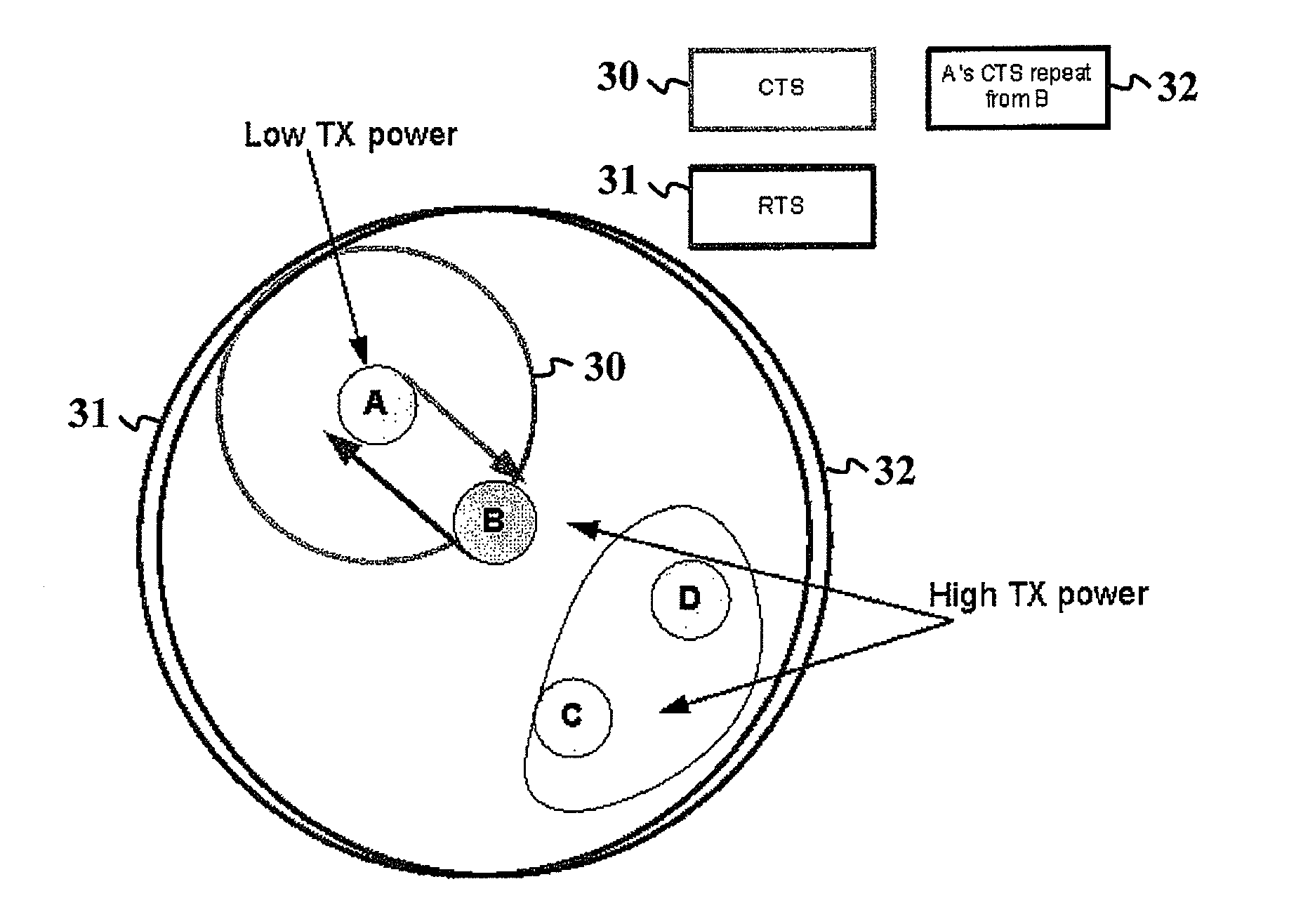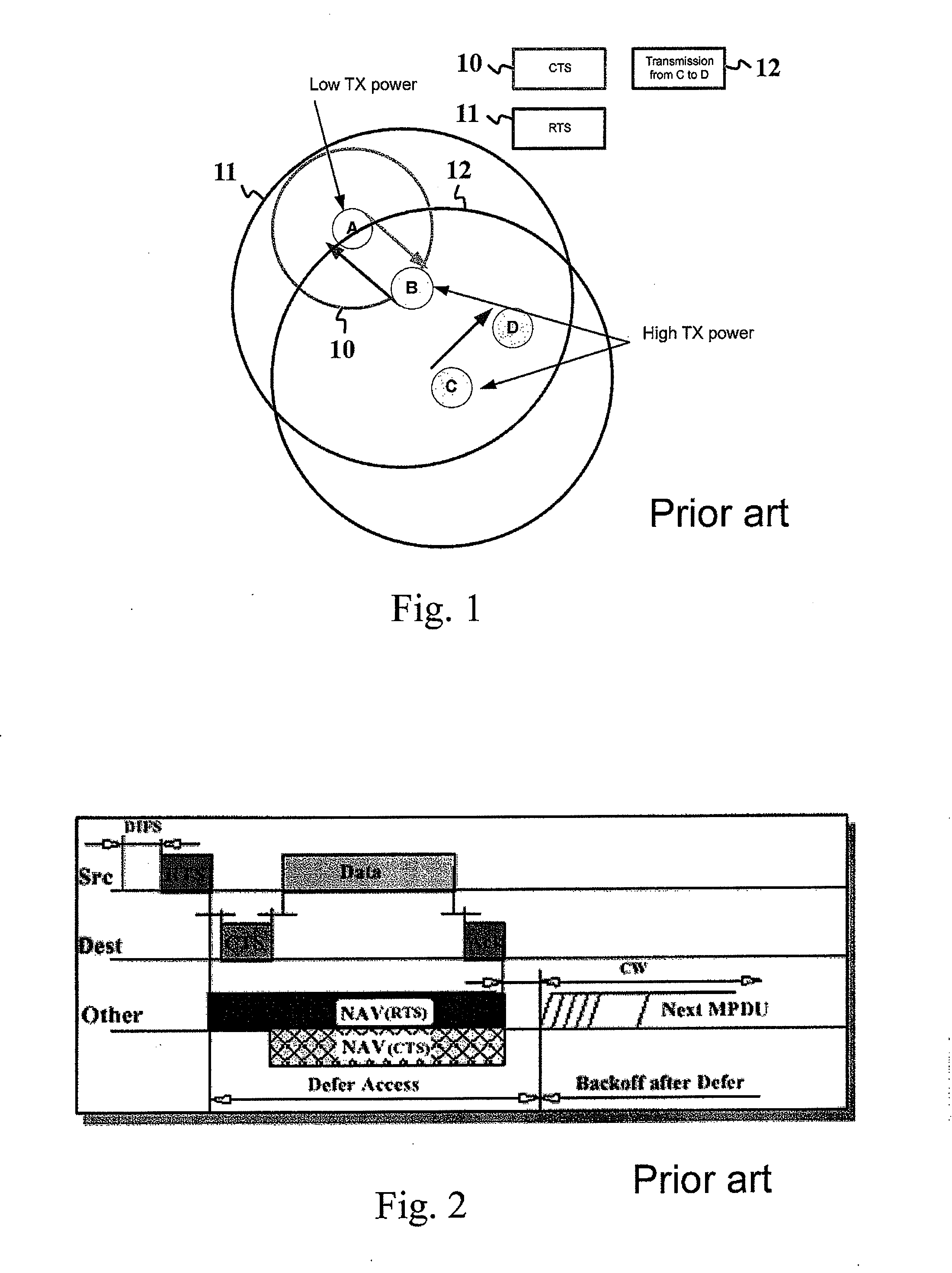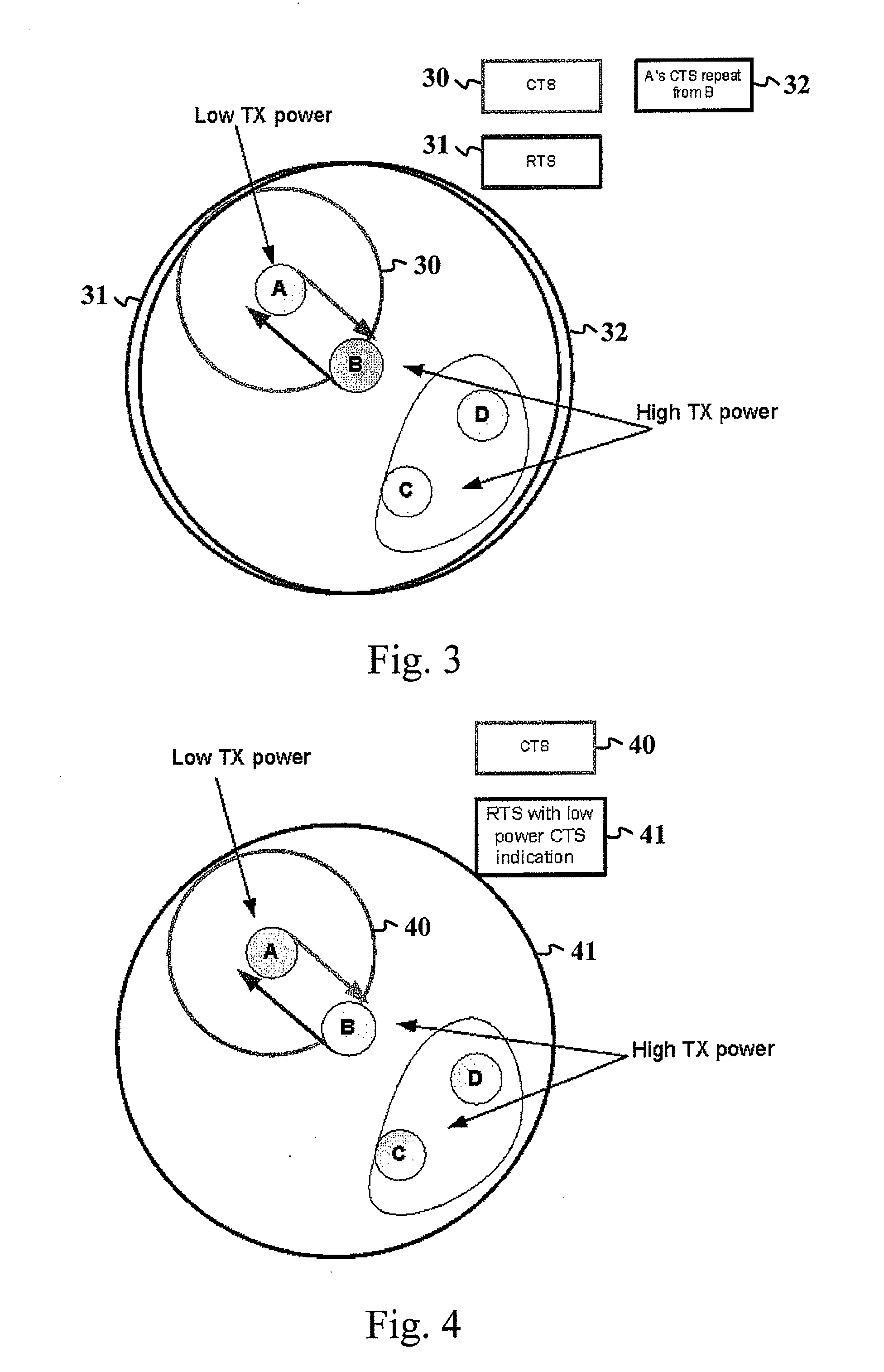Solving a hidden node problem due to transmission power imbalance
a technology of transmission power imbalance and hidden nodes, applied in the field of mobile communication networks, can solve problems such as the limitation of the portion of radio spectrum that remains availabl
- Summary
- Abstract
- Description
- Claims
- Application Information
AI Technical Summary
Benefits of technology
Problems solved by technology
Method used
Image
Examples
Embodiment Construction
[0047]Reference will now be made in detail to the embodiments of the present invention, examples of which are illustrated in the accompanying drawings.
[0048]The present invention introduces an apparatus, a method and a computer program for resolving a hidden node problem (in other words, a hidden station problem) due to power imbalance of channel reservation handshake message transfer.
[0049]According to the present invention, we consider a RTS-CTS (Ready to Send-Clear to Send) channel reservation mechanism in TV White Spaces (TVWS) and tackle the problem of the power imbalance of RTS and CTS transmissions, e.g., when fixed devices and stations (STA) are deployed on the same channel or different portable STAs have different transmit power limitations due to their geographic locations.
[0050]In a first embodiment of the invention, for resolving the hidden node (station) problem due to the power imbalance of the channel reservation handshake message transferring, the following option is...
PUM
 Login to View More
Login to View More Abstract
Description
Claims
Application Information
 Login to View More
Login to View More - R&D
- Intellectual Property
- Life Sciences
- Materials
- Tech Scout
- Unparalleled Data Quality
- Higher Quality Content
- 60% Fewer Hallucinations
Browse by: Latest US Patents, China's latest patents, Technical Efficacy Thesaurus, Application Domain, Technology Topic, Popular Technical Reports.
© 2025 PatSnap. All rights reserved.Legal|Privacy policy|Modern Slavery Act Transparency Statement|Sitemap|About US| Contact US: help@patsnap.com



